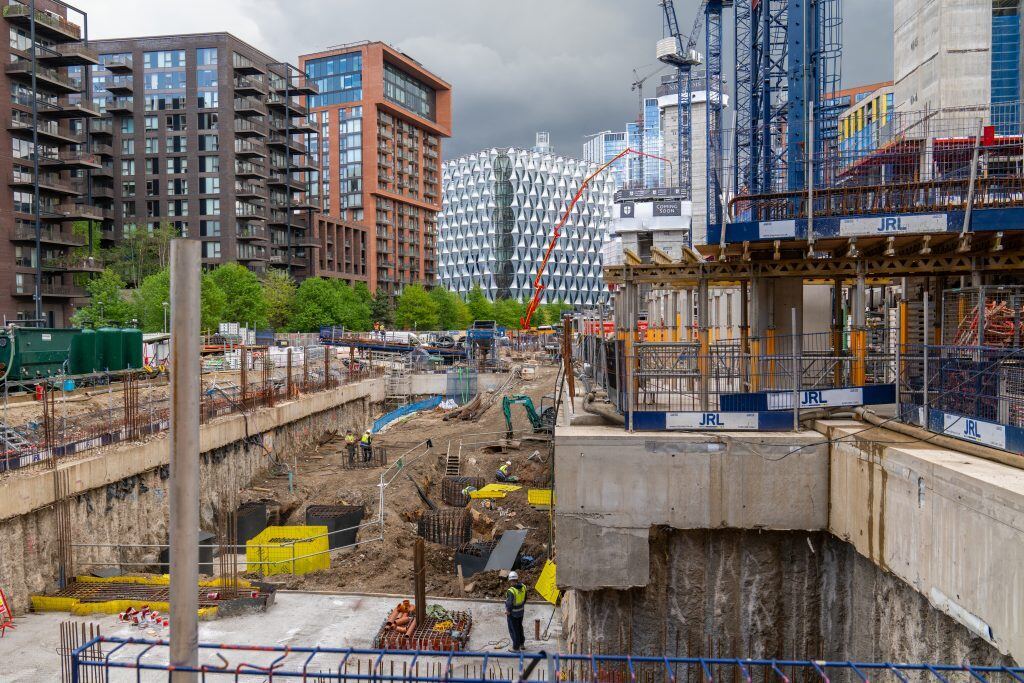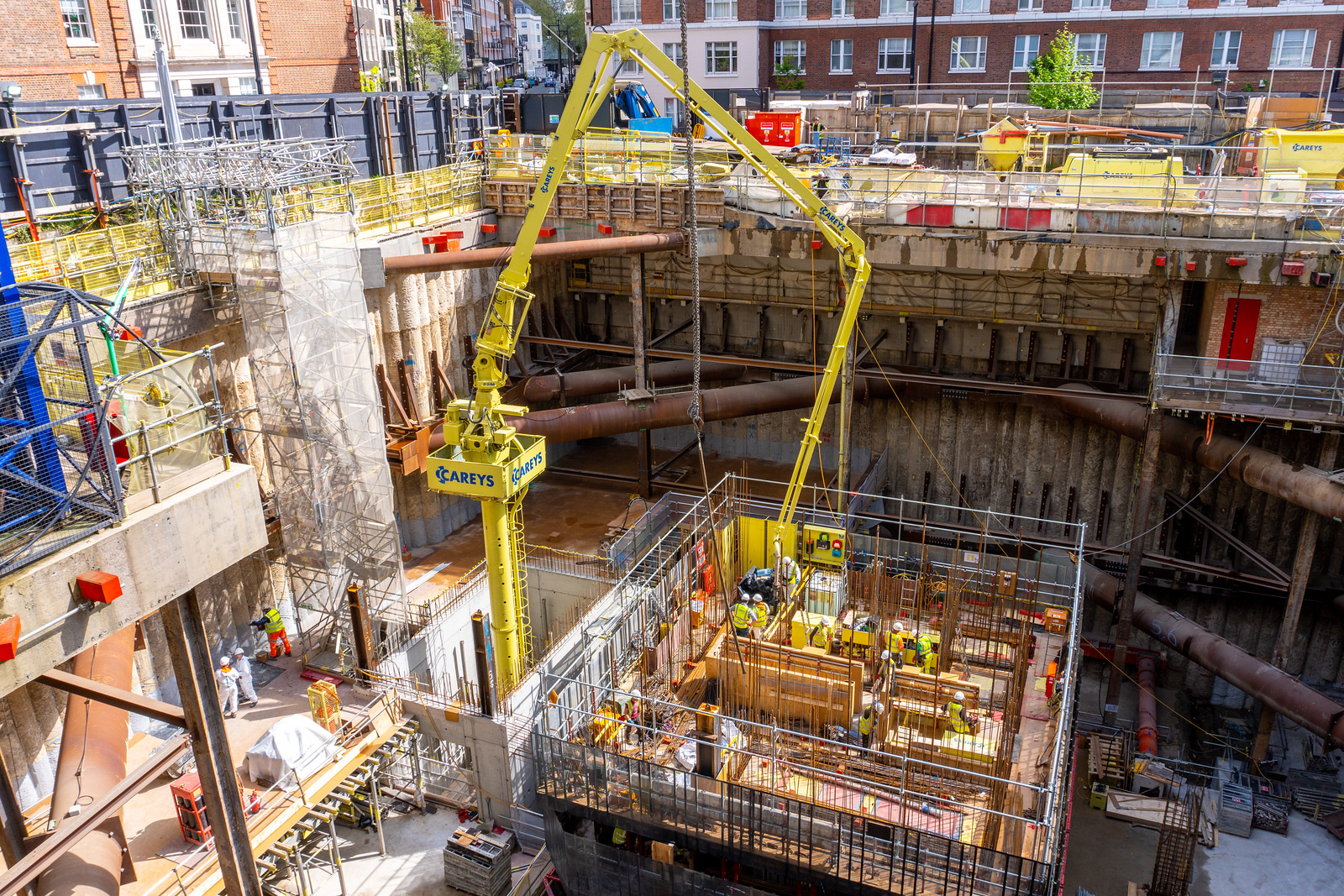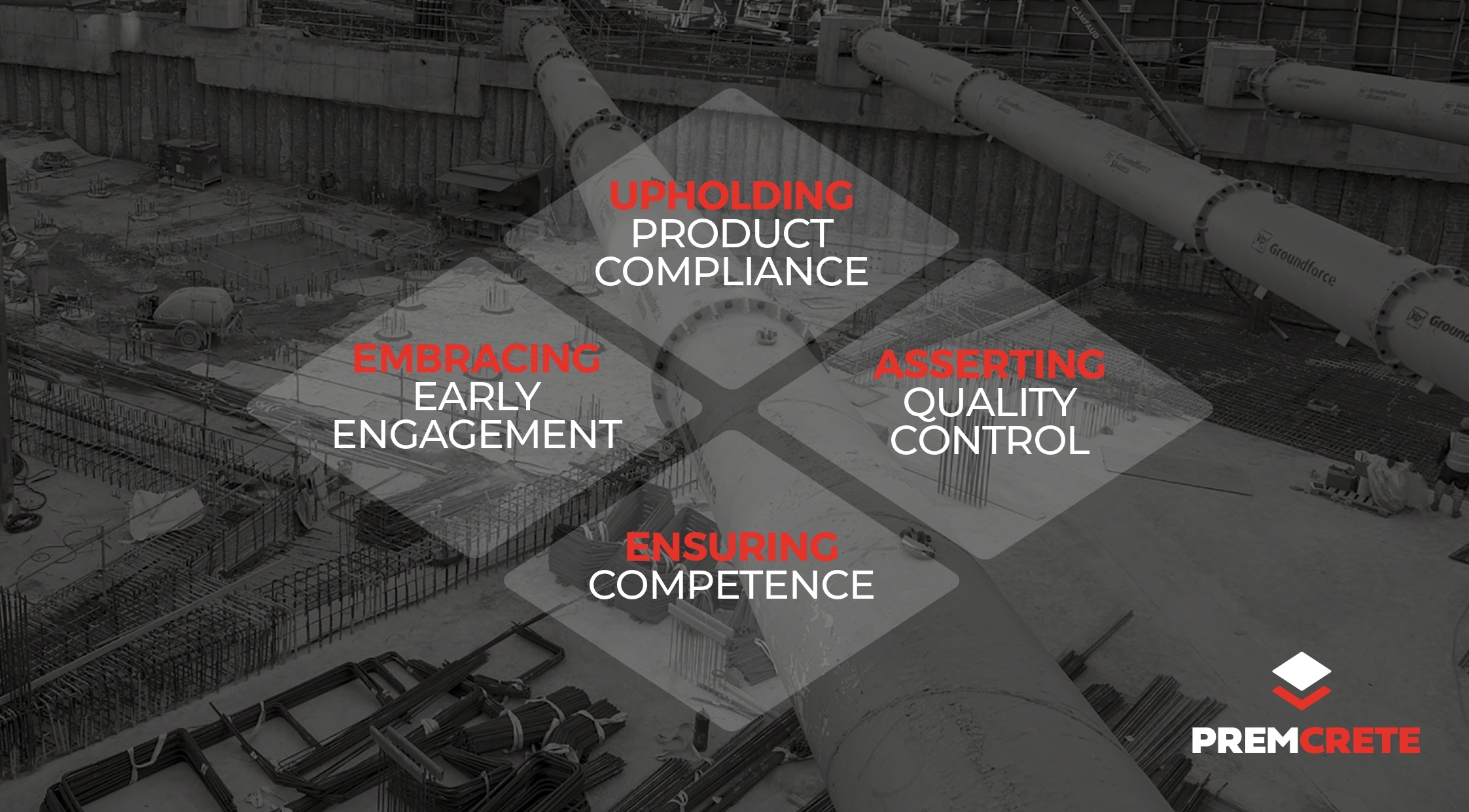The Building Safety Act has been a hot topic in the construction industry, especially as we pass the six-month mark since Gateway 2 became mandatory in April 2024. But what does this mean for your projects, particularly when it comes to substructure protection? To shed light on this, Clive Tuffin (CT) and Jason Devenish (JD) from Premcrete sat down to discuss recent findings, having monitored the impact of the Act and how it’s changing the way we approach structural waterproofing and gas protection. These insights might just be what you need to navigate these new waters…
Question 1: What’s the Connection Between Waterproofing and the Building Safety Act?
JD: “So Clive, I’d like to continue our discussions about the Building Safety Act and what’s happening in the industry. So, I have a few questions for you; starting with what has waterproofing got to do with the Building Safety Act? It’s below ground. It’s not structural. It’s no fire risk. So, why is it so key in the Building Safety Act?”
CT: “I got asked that question recently in a workshop with a main contractor about two weeks ago, and I was being challenged by the Technical Director as to what the relevance is to design in the context of Building Safety Act, when the main concentration of The Building Safety Act, in this respect, centres around fire safety and structural integrity. We’ve been discussing this for probably about nine months now with contractors, and getting some pushback, and it’s an interesting, interesting point. The key fundamental thing from our side is knowledge that the expectation is for stage four design. Until we knew that point, we didn’t really think we were going to be brought into those affected by the changes at gateway two. So, knowledge that the general expectations are for RIBA stage four design to be submitted for gateway two is exactly where manufacturers, outside of fireproofing and structural integrity, need to be in the know and to be bringing their services to the table at an early stage. So yes, absolutely it does come in early for everyone.”
Question 2: Why are timing and early engagement so critical?
JD: “Interesting. It would be, in fact, the first named product that would land on site. I think that’s why this whole RIBA stage four for gateway two submission for high-risk buildings. We’re suddenly seeing those trying to put applications in without having a project specific design with the technical details. There would be a flaw in that design. So that leads to the next question – why are timing and early engagement so critical?”
CT: “There are several reasons. We are starting to see a trend when any groundwork is being brought in a little bit earlier. And the groundworker that has been leading that submission is hoping to get away with a very modest planning style submission in terms of level of design. Then, their Building Safety Act consultants have pushed back once a submission has gone in and said “look, we do need a more developed strategy, particularly around the initial stage of works.” So, we’re getting stage submissions going into making substructure first and then following floors thereafter. There’s a lot of onus around making sure that first submission is as thorough as possible.”
JD: “Okay, so they can’t even start on site until then?”
CT: “Exactly – no excavation, no piling… nothing can happen. Yet there haven’t been many projects that have experienced this so far. We are still very much in the, I guess, learning stages at the moment. For example, we have been on a recent scheme that has been submitted – a good 8-9 weeks ago – where the contractor is still awaiting a Building Safety Regulator to be put forward. Due to this, I think we’re going to see quite a hiatus in project starts. I guess our main message to the industry is so important – that everyone gets up to date, because undoubtedly there is going to be a hiatus for a time, and the more up to speed everyone gets with their knowledge, the quicker we can get into that routine.”
Question 3: Competency and Compliance: What Are Regulators Looking For?
JD: “Again, interesting. So, in assisting some of the main contractors that we have been doing with building safety regulation submission, what are the credentials?
CT: “Well, we recently completed a design competency assessment. We probably submitted this about two or three times. Now, it doesn’t seem to necessarily be a consistent request from Building Safety Act consultants or main contractors, but I think we’ll see more of it. It’s very detailed, and there are many variations now – but essentially, they are trying to grasp the key competencies around us as designers, of our knowledge of The Building Safety Act in general – but also our general competencies in this specific area.
“Throughout the assessment it highlights the importance of making sure you outline what your key competencies are, understanding the gateway milestones and understanding the duties that we are responsible to provide as a principal designer.”
“One of the first things highlighted is whether the manufacturer has been subject to any serious sanctions in the last five years. A really key thing that the Building Safety Act regulators want to know is whether any manufacturer has had any major issues related to health and safety or projects they’ve been involved with. This assessment highlights the importance of making sure we outline what our key competencies are, ensuring they match the scale and complexity of the projects we’re working on.”

Question 4: HRBs vs. Non-HRBs: What Does This Mean for a Project?
JD: “Let’s talk about HRBs—high-risk buildings—and how the Building Safety Act differentiates them from non-HRBs. What’s your take, Clive?”
CT: “Well, first off, HRBs are defined as buildings over seven stories tall. But even if your project doesn’t meet that threshold, the Act still impacts you.
JD: “Exactly. We’re seeing this shift in how designs are being handled. Specifiers aren’t inclined to change their processes based on the building type anymore. Instead, they’re adopting a consistent design approach across the board, whether it’s a high-rise, a police station, or a data centre. This means getting your waterproofing design in place early is crucial, no matter the project.”
CT: “Yes. And for non-HRBs, it’s a little different. Even though the Building Safety Act isn’t legally required, it doesn’t mean that it doesn’t apply. The Act is driving a wider cultural change in the construction industry, and what we are hearing from specifiers is that they are inclined to adopt consistent processes across all their projects, whether they are HRBs or non-HRBs. So over time, we’ll likely see the same level of scrutiny applied to all projects.”
Question 5: How is the Building Safety Act affecting Groundworks and RC Framework Contractors?
JD: “Switching gears a bit, how is the Building Safety Act affecting groundworks and RC framework practices?”
CT: “We’re noticing a significant slowdown in new project awards, which we believe is partly due to the increased complexity introduced by the Act. Groundwork contractors need to be particularly thorough at the tender stage, especially if they’re leading the waterproofing design and Gateway 2 submissions. We’re talking about a minimum of 12 weeks for design approval, and that’s after a long lead time to get a safety regulator on board.”
JD: “Exactly. This is where early planning becomes critical. If a groundwork contractor is responsible for the waterproofing design, they need to start the process at least nine months ahead of time. This gives them enough runway to handle the approval process without delaying the project.”
Question 6: Who Should Take Responsibility for Waterproofing Design?
JD: “So, Clive, who should be responsible for the waterproofing design, and when should this be decided?”
CT: “The answer isn’t always straightforward, but the emphasis is on engaging the right experts as early as possible. The latest updates to the Building Safety Act stress the importance of involving qualified professionals—like those with CSSW (Certified Surveyor in Structural Waterproofing) credentials—right from the initial design stages. By the time you reach RIBA Stage 2 or 3, you should already have your waterproofing specialist on board.”
JD: “That’s a great point. And while there’s still a mindset in the industry to offload responsibility to specialists, we’re seeing a shift towards a more traditional approach. Clients and contractors are recognizing that getting the design sorted early, with a specialist leading it, helps avoid headaches down the line.”

“We need to ensure that waterproofing is considered as part of the comprehensive safety design”

Question 7: What are Premcrete doing to ensure Building Safety Act Compliance?
JD: “So my final question is – what are Premcrete doing to support The Building Safety Act?”
CT: “So firstly, we’ve been running a CPD surrounding The Building Safety Act, to help provide more education. We were quite surprised as to how little the industry knew about this, right across the spectrum; from engineers to architects and main contractors. But what we’ve done is distilled the detail into four areas; of which the first is upholding product compliance. Product compliance is a big thing now. Thankfully, our industry has been fairly strongly regulated when it comes to certification. But we definitely hear about other products, other industries being more stringent, but we are holding that compliance.
Secondly, we are embracing early engagement. So we’ve got the Prem 360 process where we’ve got that “first segment” of the concept design. We are trying to tell the industry that we are here and embracing it. We want to be supportive of technical details on the other end of the phone to arranging design meetings, no obligation, no cost. This is key as well, because main contractors are recognizing the need to engage with people, such as manufacturers like ourselves, yet they’re not in a position, in their contract to be formally appointing people. So at the early stage, when they really need to get the likes of ourselves, or other manufacturers, on board, they can do so.”
“The next thing is ensuring competence. So we’ve always delivered training, and we’ve always supported our stakeholders with technical support. We’ve launched the Premcrete Academy this year. It’s launching in different phases, yet there’s a lot happening. We have a whole new section on our website, which is dedicated to the academy. And as part of this, competence is huge; not just from designing, but from an installation perspective, tracing things back if there’s a defect, who was involved, who was installing this and that, and proof . So we’re putting a lot of effort into that.
Which takes us to asserting quality management, and at the forefront is our Premtrac programme; an app-based portal, where we uphold our quality management and quality control reports. And again, that helps us to trace things back, if there’s ever a defect, it can be traced back to that QC report. So you can see: who actually uploaded that report? Who installed it? Was there a change of spec? Was it an NCR? Was it closed out? So that’s what we’re doing to align with the golden thread of information. I guess, when we we introduced Premtrac about seven or eight years ago, we introduced it very much as a system to assist us internally in quality control projects, organizing QC visits and the like, not probably quite realizing how impactful it was going to be in the future, assisting us to comply with this whole golden thread requirement. And the great thing about it is, it’s an open portal that many people don’t have access to. It can get the visibility of the quality of install and coming into the scheme, especially when principal designers need to pull together. Everything is readily available at a single click button to download.
Coming back to The Building Safety Act itself, it’s so important that manufacturers are embracing it and actively working to try and understand it. No single person’s got a complete understanding, but it’s critical.”
JD: “Excellent. We’re still in a learning phase, but the message is clear: early and thorough preparation is essential. Whether it’s understanding the timeline for Gateway 2 submissions or ensuring your waterproofing design is detailed and compliant, now is the time to act.”

In Conclusion
The Building Safety Act is reshaping the construction industry, and it’s vital to stay ahead of these changes. By partnering with experts like Premcrete, you can ensure that your project not only meets regulatory standards but also avoids unnecessary delays. For more insights and to see how we can support your next project, contact us on: sales@premcrete.com
Note: This blog post is based on a recent discussion between CSSW qualified industry experts Jason Devenish and Clive Tuffin and is intended to provide guidance on navigating the Building Safety Act. For more detailed advice, please contact our team directly.
Watch the full video here:



















-1.jpg)









